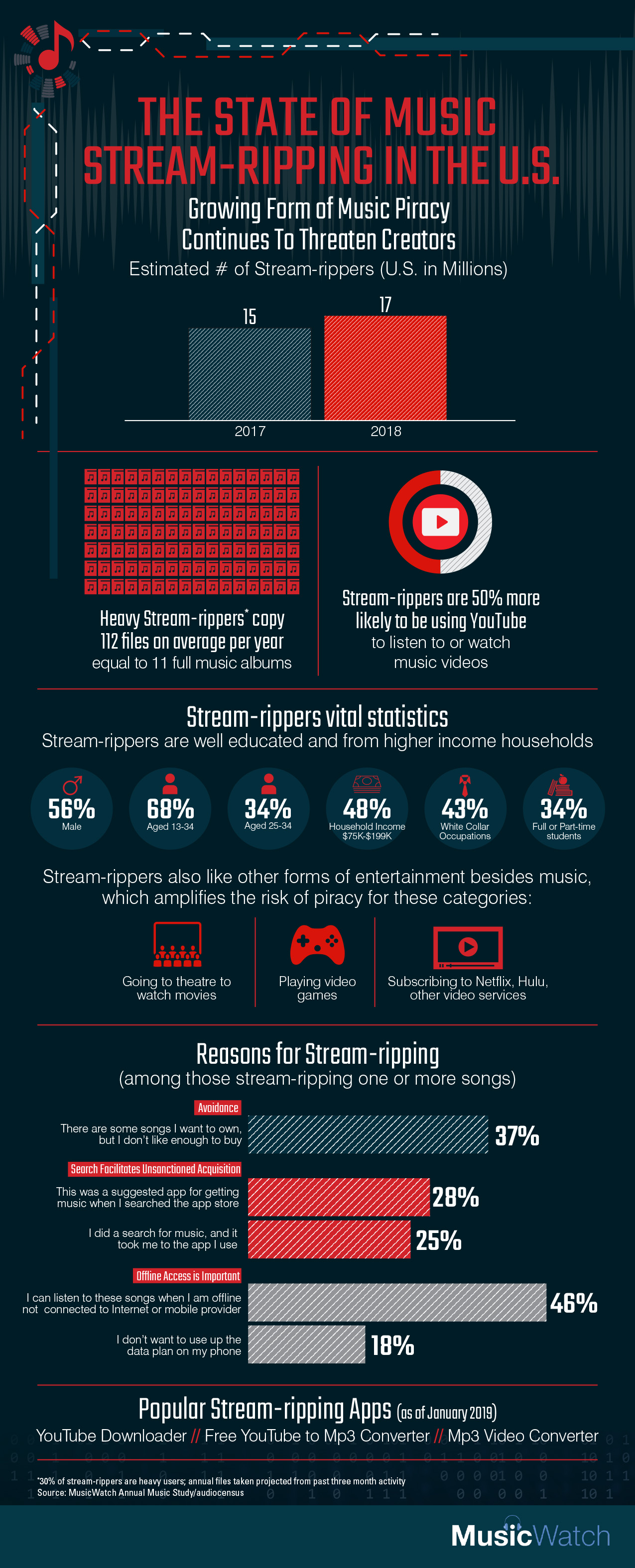According to major industry players, stream-ripping is a growing problem for recording labels and Internet platforms alike.
With revenues from streaming set to increase, people permanently downloading music from YouTube and similar platforms is considered a threat. Those who obtain content in this way can effectively circumvent the streaming business model, it’s argued.
A new study carried out by music industry research company MusicWatch suggests that in the United States, the phenomenon is on the increase.
The study was carried out among 5,000 Internet users 13 years and above in January and early February 2019. From 15 million participants in 2017, the study found that around 17 million citizens in the U.S. participated in stream-ripping during 2018.
“I suspect the gain might be related to a few reasons,” MusicWatch Managing Partner Russ H. Crupnick informs TorrentFreak.
Crupnick cites a few factors, including the overall popularity of YouTube and the decline in purchases from iTunes – but people still wanting to have a song for their collection. The gradual decline of P2P sharing may also play a part as people still retain a desire for music, thanks to streaming.
“As more people stream they get a greater appetite for music,” Crupnick notes.
MusicWatch says that just over half (56%) of those who stream-rip are male, with 68% of all ‘rippers’ falling into the 13 to 34-years-old bracket. The company categorizes 30% of users as ‘heavy’, ripping around 112 files (or roughly 10 to 11 albums worth of music) every year.
The main reasons for people to stream-rip are to have offline access to songs (46%) and wanting to own a song that isn’t considered worth buying (37%). While neither comes as a surprise, cost isn’t cited as a major factor.
Indeed, MusicWatch found that almost half (48%) of stream-rippers come from households with an annual income of $75K-$199K, with 43% holding down white-collar jobs. So what drives these people to rip?
“With a lot of piracy it’s not been about cost, it’s been about selectivity. I want something but not enough to pay for it?” Krupnick says.
“Unlike the P2P days, they aren’t downloading thousands of songs randomly. Just what they want for a collection, or a project. And they don’t want that song enough to pay $.99 for it.”
MusicWatch informs TF that the demographic for heavy streamers and those with a lot of devices is the affluent and the belief is that they are more tech-savvy than average. However, many people don’t consider that what they’re doing is potentially illegal.
“It’s using YouTube; the app is on Google Play or Apple’s App Store…what’s the problem?” Krupnick says,
“And in fact, I think that is part of the problem. We all knew that Napster/Limewire was ‘bad’. Here’s an app I get from Apple, that works fine on my iPhone or Mac, connects to a legal streaming service – where’s the problem?”
MusicWatch believes that search and app platforms should do more to educate consumers about which uses of their services could potentially result in copyright infringement. The company adds that stream-rippers are more likely to go the movies, play video games and subscribe to Netflix or Hulu, so if they pirate/rip music, that behavior could spill over to other areas.
“Discouraging stream-ripping isn’t just good for music; it’s good for the entire entertainment ecosystem,” MusicWatch concludes.

Source: TF, for the latest info on copyright, file-sharing, torrent sites and more. We also have VPN reviews, discounts, offers and coupons.














